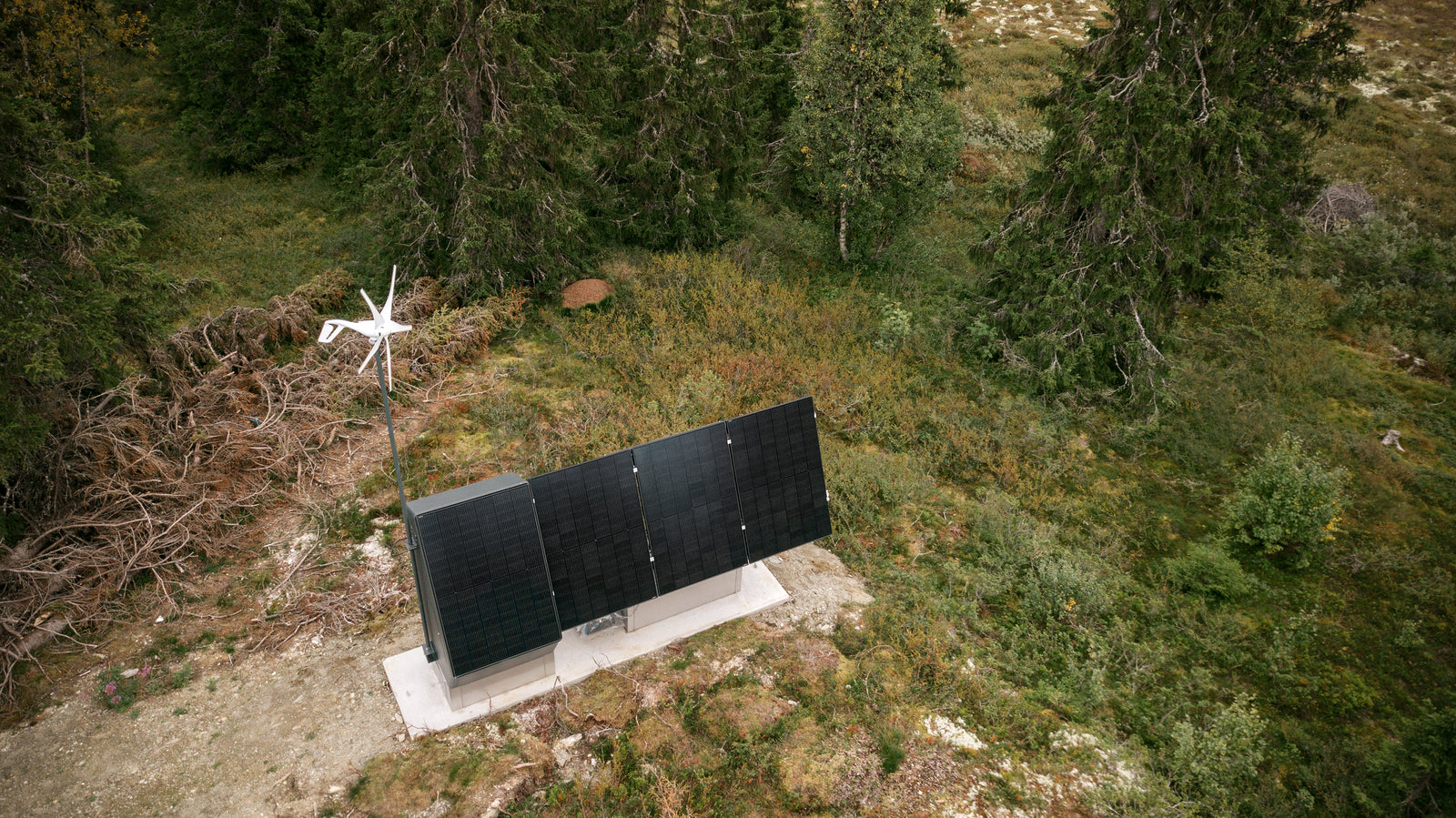Going off-grid with a power station from Sowin Power can provide significant energy independence, an increased degree of self-sufficiency, increased energy efficiency and reduced electricity costs. But how much electricity can you actually produce, store and use with a power station with additional equipment from us?
Our starting point is a cabin in Norway, with a typical Norwegian climate with varying sun and wind conditions throughout the year, and with an average electricity consumption of approximately 8,000 kWh for a holiday home.
We point out that there are many variables that come into play here and that the numbers and conclusions we draw here will be different with other assumptions.
Let's look at this rather complicated calculation.
Solar panels
With three solar panels of 410 W each, the total effect is:
- Total power of solar panels: 3 panels x 410 W = 1230 W (1.23 kW).
- Based on average solar radiation in Norway, which is approximately 2.5 kWh/m² per day, the estimated annual production from these panels will be as follows:
- Average daily production: 1.23 kW x 2.5 hours = 3 kWh per day.
- Annual production: 3 kWh per day x 365 days = 1122 kWh per year.
Wind turbines
The wind turbine we use have a peak power at 1500 W.
Daily production: 1.5 kW x 5 hours = 7.5 kWh per day.
Annual production: 7.5 kWh per day x 365 days = 2737.5 kWh per year.
Total Production
Now let's look at the total energy production.
- Total annual production from solar cells: 1122.375 kWh.
- Total annual production from wind turbine: 2737.5 kWh.
- Total annual production: 1122.375 kWh + 2737.5 kWh = 3860 kWh per year.
Degree of coverage
With an annual energy demand of 8000 kWh and a total annual production of 3860 kWh, this energy production will cover approximately 48.25% of the total energy demand.
The winter months
Use of electricity in the winter months is estimated to around 6,000 kWh. Since solar radiation is lower in winter, the wind turbine will be the largest contributor to energy production during this period.
The wind turbine produces a total of 2738 kWh per year, which will cover part of the winter consumption, but there will still be a significant deficit. To cover this deficit, you can either reduce energy consumption or increase energy production, for example by adding more wind turbines.
The summer months
Summer consumption is 2,000 kWh, while energy production is higher due to better solar radiation. The surplus from the summer months can be stored in the batteries.
With a total production of 3860 kWh per year, you will have a surplus in the summer months that can be stored for winter use.
Adjustment of Energy consumption
To cover the entire energy requirement, especially in the winter months, it may be necessary to:
- Increase the number of solar panels or wind turbines: To increase the total energy production.
- Reduce energy consumption: Through energy-efficient measures, especially in the winter months.
- Optimizing battery storage: To ensure that all excess energy from the summer can be used in the winter. The battery pack of 28 kWh provides limited capacity, and an upgrade may be necessary if you wish to store more energy.
Conclusion
The total annual contribution of energy is not enough to cover the entire energy need for a holiday home in Norway. The total production of 3856 kWh per year covers approximately 48.25% of the total need of 8000 kWh. Further adaptations will still be necessary to cover the entire energy requirement, especially in winter, through more solar panels, wind turbines, or energy efficiency.
But remember that the use of 8.000 kWh for an holiday home in Norway is based on cabins connected to the power grid. It does not include off-grid cabins, which use just a fraction of the same levels of energy.





perpustakaan online
July 14, 2025
The surplus from the summer months can be stored in the batteries? Visit us Perpustakaan Online